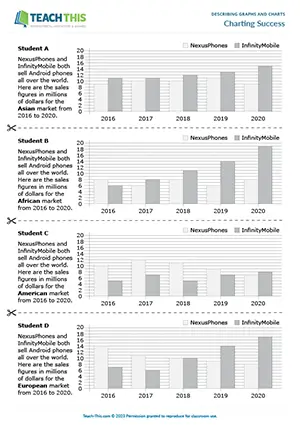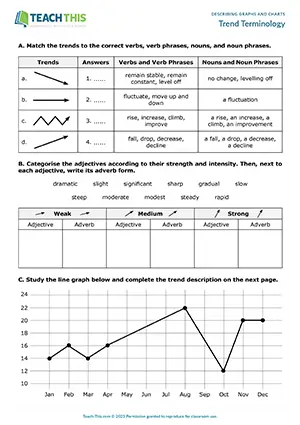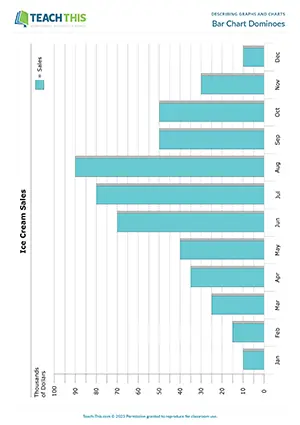Describing Graphs & Charts: Business English Activities, Games & Worksheets
Charting Success

Business English Describing Charts and Trends Activity - Writing, Listening and Speaking: Table Completion, Summarising, Freer Practice - Group Work
In this productive describing charts and trends activity, students describe sales figures and trends in bar charts. First, in groups, each student completes a table on...
Trend Tracker
Business English Describing Graphs Activity - Speaking: Describing, Drawing, Controlled and Freer Practice - Pair Work
In this free describing graphs and trends speaking activity, students describe and draw trends in a line graph. In pairs, Student A begins by describing a line graph showing a company's profits in millions...
Trend Terminology

Business English Describing Trends Worksheet - Vocabulary, Reading and Writing Exercises: Matching, Categorising, Gap-fill, Writing a Paragraph
In this useful describing trends worksheet, students practice verbs, nouns, adjectives and adverbs that describe trends. Students begin by matching symbols that...
Bar Chart Dominoes

Business English Describing Bar Charts Game - Vocabulary: Matching - Pair Work
In this describing bar charts game, students use a picture to match dominoes together and form a description of a bar chart and its trend. The first player looks at the...

